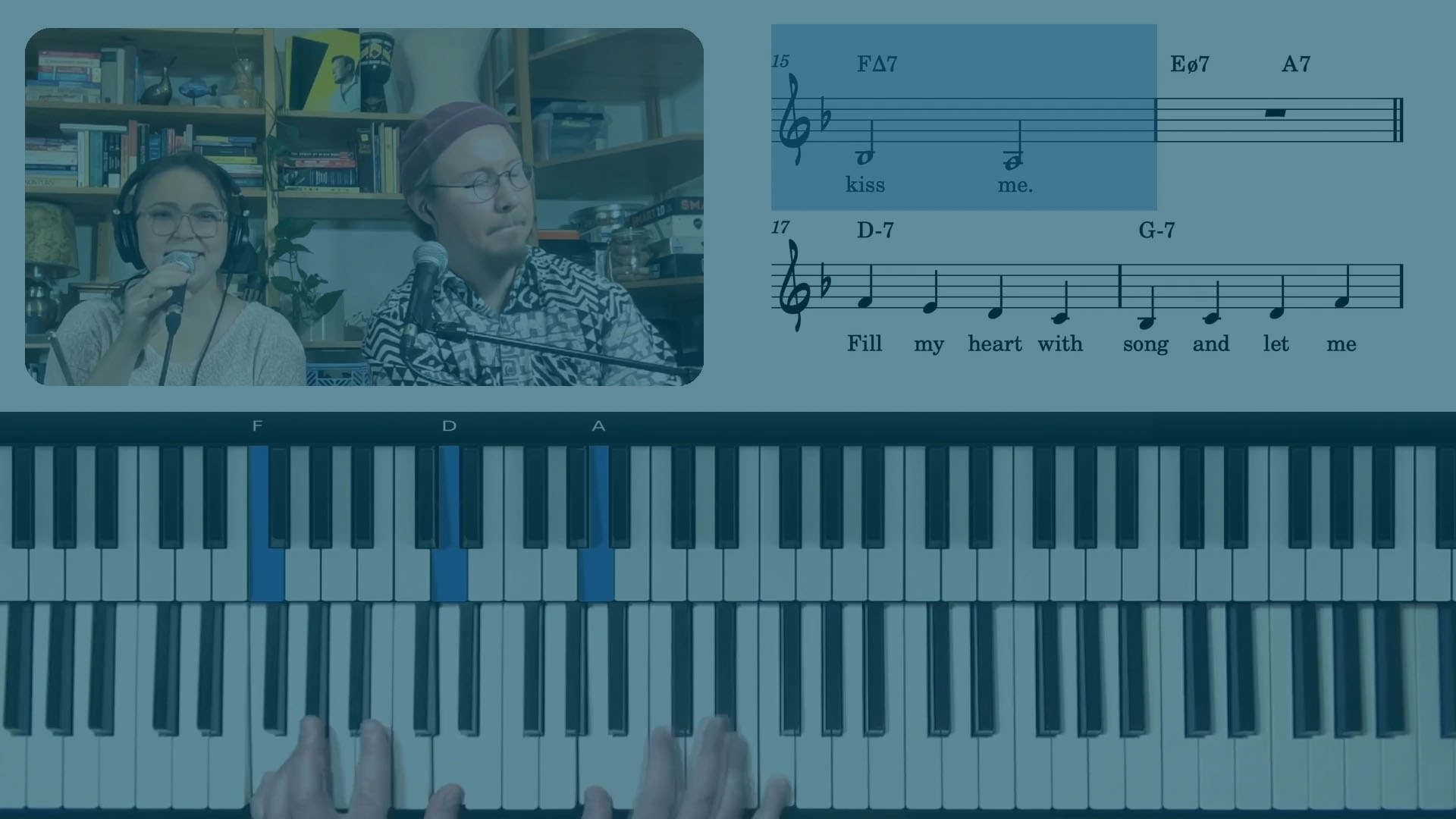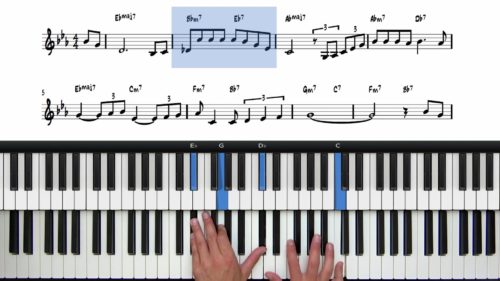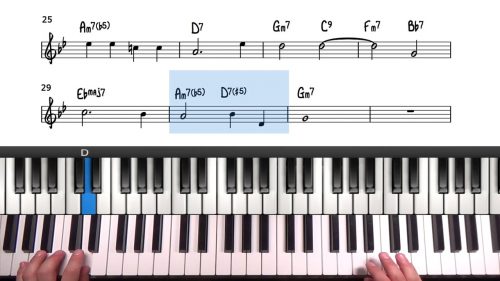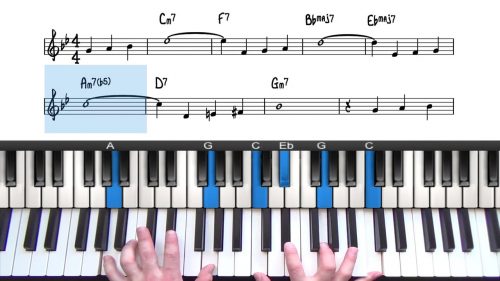In-Tempo vs. Rubato Vocal Accompaniment
Welcome to the concluding lesson in our Vocal Accompaniment Series. This final session ties together the entire course through practical demonstrations of everything we’ve explored: supportive voicings, time feel, interaction with vocalists, and performance form.
We demonstrate these concepts through three well-known jazz standards: “Misty,” “Autumn Leaves,” and “Bewitched, Bothered and Bewildered.”
“Misty” – Rubato Vocal Accompaniment (Ballad)
We begin with the jazz ballad “Misty,” highlighting the flexibility and expressive potential of rubato accompaniment. While “Misty” doesn’t have a written verse, we simulate a rubato intro by stretching the time and then letting the lyrics guide the phrasing of the first A section.
Rubato Accompaniment Techniques and Role of the Vocalist
- Rubato Without a Verse: Even in songs lacking a formal verse, rubato can be used before the initial A section to set a lyrical tone.
- Pulse Awareness: The pianist maintained subtle pulse cues, which helped anchor the performance without sounding rigid.
- Space and Dynamics: Accompanists should prioritize spaciousness, allowing the vocalist to shape phrases and explore lyrical emotion.
- Three-Note Voicings: Basic 3-note spread voicings were used to outline harmony with clarity while leaving sonic room for the singer.
This performance is ideal for beginners exploring vocal-piano interaction in a ballad setting, especially with rubato phrasing.
“Autumn Leaves” – In-Time Accompaniment (Medium Tempo)
Next, we move into medium swing territory with “Autumn Leaves,” arranged in the key of A minor/C major. This tune is often a jazz singer’s first introduction to singing with accompaniment and exploring melodic variation.
Simplicity and Support in Medium Swing
- Structured Intro: The pianist begins in time to clearly establish groove and tempo, making it easier for the vocalist to enter.
- Melodic Variation: The first chorus was sung as written, with the second offering more freedom, showcasing interpretive contrast.
- Adaptable Voicings: Simple 3-note spread voicings remain highly effective even at faster tempos, providing support without excess.
- Responsive Accompaniment: The pianist listens closely at the ending, waiting to hear the singer’s final note before resolving harmonically.
The arrangement offers a template for developing accompanists to support singers in medium tempo standards—balancing clarity, consistency, and adaptability.
“Bewitched, Bothered and Bewildered” – Using the Verse
To wrap up the session and the entire course, we present a full rendition of “Bewitched, Bothered and Bewildered,” including the often-overlooked verse. This adds depth to the performance and shows how to incorporate more dramatic vocal storytelling into a jazz setting.
Key Elements in the Final Performance
- Verse as Emotional Setup: Including the verse provides additional context and allows for more expressive rubato phrasing.
- Interaction and Listening: The pianist listens attentively to the vocalist, providing dynamic and harmonic support while leaving plenty of room for personal interpretation.
- Lyrical Sensitivity: The accompaniment highlights and responds to the emotion of the lyrics, a hallmark of mature duo performance.
This performance demonstrates how to apply all earlier lessons in a single piece—from voicing choices and time feel to dynamics and ensemble communication.
This final session is a showcase of all the foundational skills taught throughout the Vocal Accompaniment Series. Whether performing a tender ballad or a swinging standard, your goal as an accompanist is to support, enhance, and interact with the vocalist through attentive listening and tasteful playing.
Practice Tips
-
Explore Rubato Intros: Choose a ballad and try stretching the time on the first A section while following the lyrics for phrasing cues.
-
Use 3-Note Spread Voicings: These voicings work across tempos and provide a consistent, supportive harmonic framework.
-
Keep a Subtle Pulse: Even in free time, keep an underlying sense of beat to help ground the performance.
-
Practice Active Listening: Respond to the vocalist’s phrasing and dynamics in real-time—especially on endings.
- Balance Simplicity with Expression: Aim for clear, simple accompaniment and allow the melody and lyric to take center stage.








I sure would like a sheet music download of your accompaniment for Fly Me To The Moon.
It’s nice to hear about all the theory behind it, but the actual sheet music would allow me to learn what you did directly, then I could sing and play that arrangement, which I would really like to do.
Hi Waffles,
Yes we are currently notating the performances and demonstrations. They will available on the website shortly.
I’ll post a reply here where they are available.
Talk soon,
Hayden